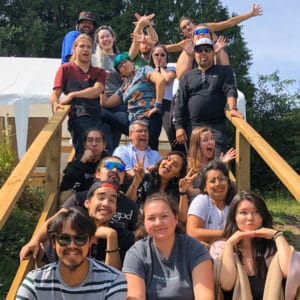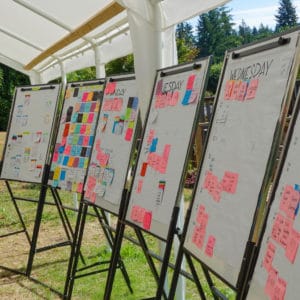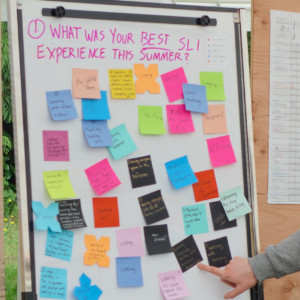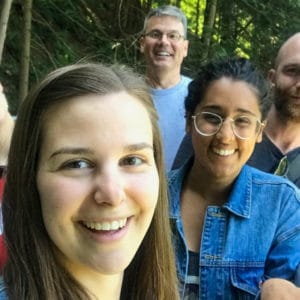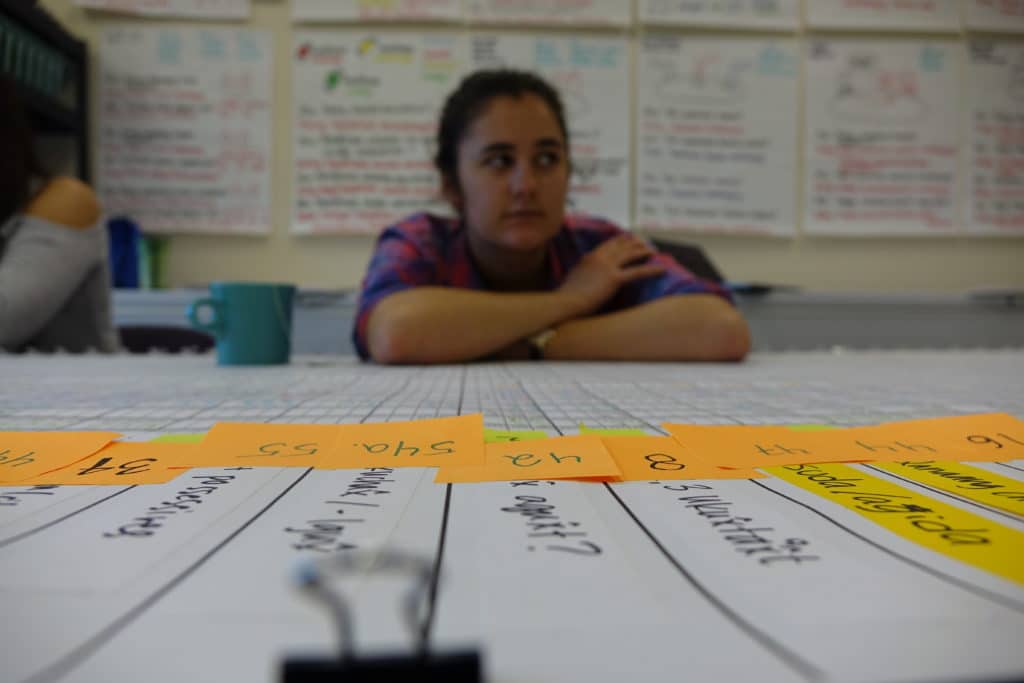
One of the most useful things that I have worked on during my summer with WAYK that I will bring back with me to help with my own languages is a “Fluency Freeway.” In its basic form, a Fluency Freeway is a long sheet of paper taped on a wall that keeps track of all the lessons that exist for a language and who has learned and taught them. In a deeper sense, it’s a highly thought-out track for reaching what we call “milestones” in the language.
One of the tricky things about learning languages is that it can be hard to know how well your language skills are developing. To use a metaphor I’ve heard often during the Summer Intensive, it’s like walking up an incredibly long flight of stairs with clouds surrounding the highest stairs: our goal, fluency. To make our progress more measurable and to give people a moment to breathe and realize how far they’ve come, we use milestones.

A milestone can be almost anything, as long as it’s in the language. Sometimes it’s easiest to use already-created materials like songs or storybooks as milestones. Or perhaps you have some goal conversations in mind. One popular milestone is a self-introduction, since stating your name, clan, family, and place of origin is often an important thing in Indigenous communities. Once you’ve picked some milestones, you’ll want to arrange them from most easily achievable to most difficult. Some things to consider are how difficult the grammar is, as well as how easily you can teach the vocabulary through set-ups.
Then, you can start breaking the milestone apart into lessons. To do this you’ll need to figure out all the grammar and vocabulary bite-sized pieces that a person would need to understand the milestone. Sometimes you’ll need to use what educators call “scaffolding” to build up to harder things. Basically, your goal is to put together the order that the stairs need to go in to get someone from knowing nothing to being able to understand and produce the milestone language. You’ll also want to think about making sure your steps are not too steep or too shallow so that climbing the stairs is a smooth experience.
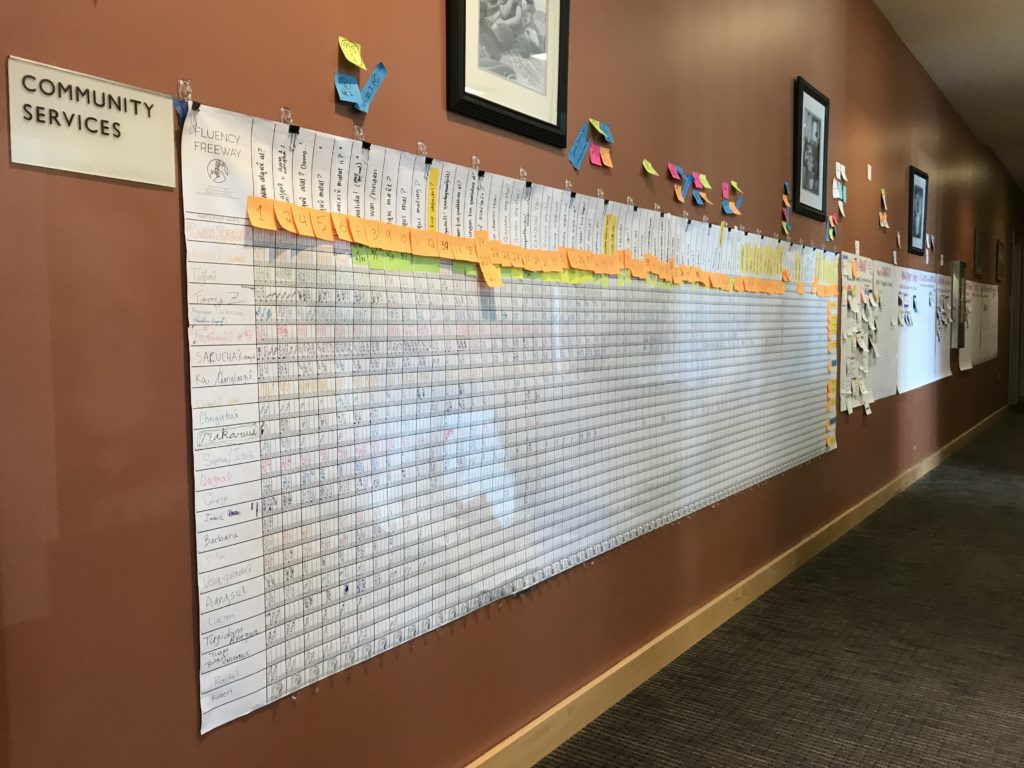
BEFORE: An early iteration of the Niiĝuĝim Tunuu Fluency Freeway developed at the 2018 Anchorage Summer Language Intensive. 
AFTER: The printed version of the Niiĝuĝim Tunuu Fluency Freeway at the end of the 2018 Anchorage Summer Language Intensive.
It’s not always easy to know exactly in what order the lessons should go. On the Niiĝuĝim Tunuu team, we spent three half-days this summer just arranging our lessons in the order that makes the most sense for learners. As you test the lessons with actual learners, you’ll figure out the best order.
There’s a lot more that could be said about Fluency Freeways. I haven’t even started talking about the cool way that they keep track of who has played a lesson, who knows the lesson, who has taught it, and who has trained someone else to teach it. But I’ll leave that for someone else to write about on another day (you can read a little bit more about it in Mary’s post on WAYK and Community Organizing)

2018 WAYK Interns Robyn Giffen and Kai Pyle look at an early iteration of the Niiĝuĝim Tunuu Fluency Freeway (Curriculum). 
A section of the early version of the Niiĝuĝim Tunuu Fluency Freeway being edited during the 2018 Anchorage Summer Language Intensive with WAYK. 
The Anchorage Team (Nate, Bobbi, Sally, Millie, Darling, WAYK intern Robyn, and Mike) admire the new, printed version of the Niiĝuĝum Tunuu Fluency Freeway at the end of the 2018 Anchorage Summer Language Intensive. 
A close up of the grid on the WAYK Fluency Freeway.
Post authored by Kai.
You can learn more about the Fluency Freeway and its precursor the “Perfect Path” in this video from our new Introduction to Where Are Your Keys series.

